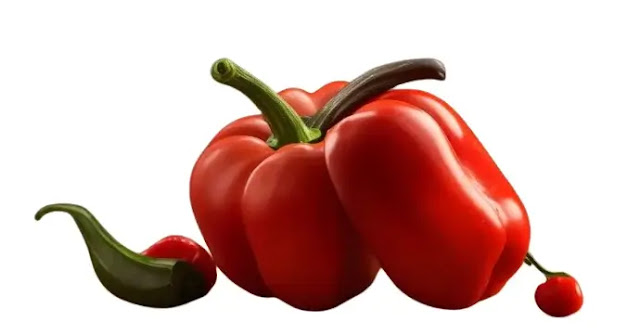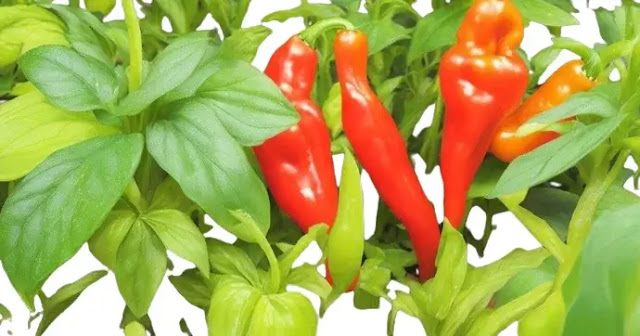The classification of certain foods as fruits or vegetables can sometimes be surprising. One such example is the pepper. While often used as a vegetable in culinary contexts, the pepper actually falls under the botanical category of fruits. In this article we are going explore the fascinating world of peppers, exploring both their botanical and culinary classifications which make them exclusive.
Is a Pepper a Fruit or a Vegetable? How Peppers Are Used in the Kitchen?
The culinary world is filled with fascinating debates which temper
our curiosity. Peppers provide a scope of fundamental dietary
supplements that add to a first rate weight loss plan. While the classification of peppers as
fruit might come as a surprise to some, the botanical reality behind this
distinction is both intriguing and significant.
Botanical Classification: Peppers as Fruits
In botanical terms peppers are classified as fruits. They the family peppers
also include tomatoes, eggplants and potatoes. Fruits are typically defined as
the mature ovaries of flowering plants and containing seeds within. Peppers fit
this description perfectly, as they develop from the flowers of pepper plants
and contain seeds.
Culinary Classification: Peppers as Vegetables
From a culinary position peppers are often treated as vegetables and
also their versatility in numerous dishes. They are exceptional for dunking in hummus or
consisting of a pop of coloration to servings of mixed greens. This culinary classification is not based on their
botanical characteristics but how they are used in cooking.
Historically, the classification of fruits and vegetables has been
influenced by cultural and legal factors. In the late 19th century, the United
States Supreme Court even weighed in on this debate, ruling that tomatoes,
despite being botanically fruits should be classified as vegetables due to
their common usage.
Peppers' Nutritional Value
Peppers are packed with essential nutrients which pay to a healthy diet. It is a force to be reckoned with of scientific blessings which could pay for your fashionable wellness. Peppers contain dietary fiber and numerous minerals which making them a valuable addition to any meal plan.
Nutritional Values of Common Peppers
Peppers come in a variety of colors, flavors and heat levels that
making them a versatile and flavorful addition to your meals.
|
Nutrient |
Sweet Bell Pepper (1 medium) |
Red Chili Pepper (1 medium) |
Jalapeno Pepper (1 medium) |
|
Calories |
30 |
18 |
4 |
|
Carbohydrates |
7 g |
4 g |
1 g |
|
Dietary Fiber |
2 g |
1.5 g |
0.5 g |
|
Sugars |
4 g |
2 g |
0.5 g |
|
Protein |
1 g |
1 g |
0 g |
|
Fat |
0 g |
1 g |
0 g |
|
Vitamin A |
1021 IU |
2344 IU |
717 IU |
|
Vitamin C |
152 mg |
67 mg |
40 mg |
|
Vitamin B6 |
0.3 mg |
0.4 mg |
0.1 mg |
|
Foliate |
20 mcg |
7 mcg |
5 mcg |
|
Potassium |
210 mg |
115 mg |
42 mg |
Growing and Harvesting Peppers
Pepper plants flourish in warm climates and are commonly cultivated in regions around the world. They require well-draining soil and consistent watering. They are exceptional for dunking in hummus or consisting of a pop of coloration to servings of mixed greens. While some are harvested when green, others develop vibrant shades of red, orange or yellow, signaling their readiness for consumption.
Health Benefits of Pepper
Pepper, whether it is the mild bell pepper is further than just a
flavor garnish in your meals. It is a force to be reckoned with of scientific
blessings which could pay for your fashionable wellness. Let's discover the top health benefits which peppers
bring to the table:
Rich Source of Vitamins
Peppers, particularly the brightly colored ones are loaded with essential vitamins. L-ascorbic acid, acknowledged for its resistant helping homes, is bountiful in peppers, serving your frame push back diseases and maintaining up with sound pores and skin.
Antioxidant Boost
The vibrant colors of peppers signal the presence of antioxidants
which combat harmful free radicals in your body.
Heart Health
Capsaicin, the compound responsible for the spiciness in peppers
has been linked to cardiovascular benefits.
Weight Management
Peppers can rev up your metabolism due to capsaicin's thermo genic
effects.
Digestive Aid
The dietary fiber found in peppers supports healthy digestion. It empowers customary sturdy releases and may
alleviate blockage. Capsaicin may support
soothe stomach issues by promoting the release of digestive enzymes.
Pain Relief
Believe it or not, capsaicin's benefits go beyond taste. When
applied topically in the form of creams or patches, it can provide relief from
pain conditions like arthritis, muscle soreness and nerve pain by desensitizing
pain receptors.
Eye Health
Peppers, particularly the red and orange varieties, contain high
levels of lutein that are crucial for maintaining good vision. They protect
your eyes from harmful UV radiation and may lower the risk of age related
macular deterioration.
Cancer Prevention
The antioxidants in peppers play a role in reducing the risk of
certain cancers.
Mood Enhancement
Capsaicin activates the release of endorphins also known as
"feel-good" hormones.
Skin Health
The vitamins and antioxidants in peppers contribute to healthy, glowing skin. They useful resource collagen coming, that is key for containing up with pores and skin adaptability and lessening the presence of crimps.
How Peppers Are Used in the Kitchen
Peppers, with their vibrant colors and diverse flavors, have
earned a treasured spot in kitchens around the world. From add a subtle
sweetness to delivering a fiery kick.
Fresh and Raw
One of the simplest and most delightful ways to enjoy peppers is
by consuming them fresh and raw. Slice bell peppers with their crisp texture
and mild flavor. Peppers provide diverse choices that could improve
your culinary manifestations. Hot peppers are on the other hand that can be used sparingly
to add a burst of heat to dishes.
Sautéed and Stir-Fried
Peppers shine when sautéed or stir-fried. Their herbal sweetness caramelizes as they prepare dinner and growing a extraordinary intensity of flavor. They can be paired with different veggies, meats and nutritious stir-fry dishes which are each visually appealing and delectable.
Roasted and Charred
Roasting or charring peppers brings out their smoky and intense flavors. Roasted peppers can be sliced and used in sandwiches, pasta dishes or salads. Charred peppers are often used in salsas, dips and spreads to add a distinct smokiness.
Stuffed Peppers
Bell peppers are a popular choice for stuffing due to their hollow
shape. They can be filled with a variety of ingredients, such as rice, ground
meat, cheese and herbs which creating a satisfying and flavorful meal.
Pickled Peppers
Pickling peppers preserves their vibrant colors and introduces a
tangy and slightly sour flavor profile.
Pepper-based Sauces
Pepper-based sauces come in various forms, from mild to hot.
Peppers are often blended with other ingredients like tomatoes, garlic and
spices to create tasty sauces which can be used as dips, marinades or toppings
for numerous dishes.
Flavored Oils and Vinegars
Filling oils or vinegars with peppers is a creative way to add a hint of pepper's essence to your dishes. These infused oils and vinegars can be rained over salads and grilled vegetables for a add layer of tang.
Garnishes
Peppers make excellent garnishes which enhance the visual appeal
of your dishes. Finely diced peppers can be sprinkled over soups, omelets and
even desserts to add color and a touch of flavor.
Dehydrated and Ground
Peppers can be dehydrated and ground into powders that such as
chili powder or paprika. These powders are used to season dishes, adding not
only heat but also depth of taste and vibrant color.
Conclusion
The question of whether a pepper is a fruit or a vegetable highlights the intriguing overlap between botanical. While peppers undoubtedly qualify as fruits in botanical terms, their common use in savory dishes has led to their culinary identification as vegetables. This duality is a testimony to the complexity of the herbal international and the way humans interpret.





0 Comments